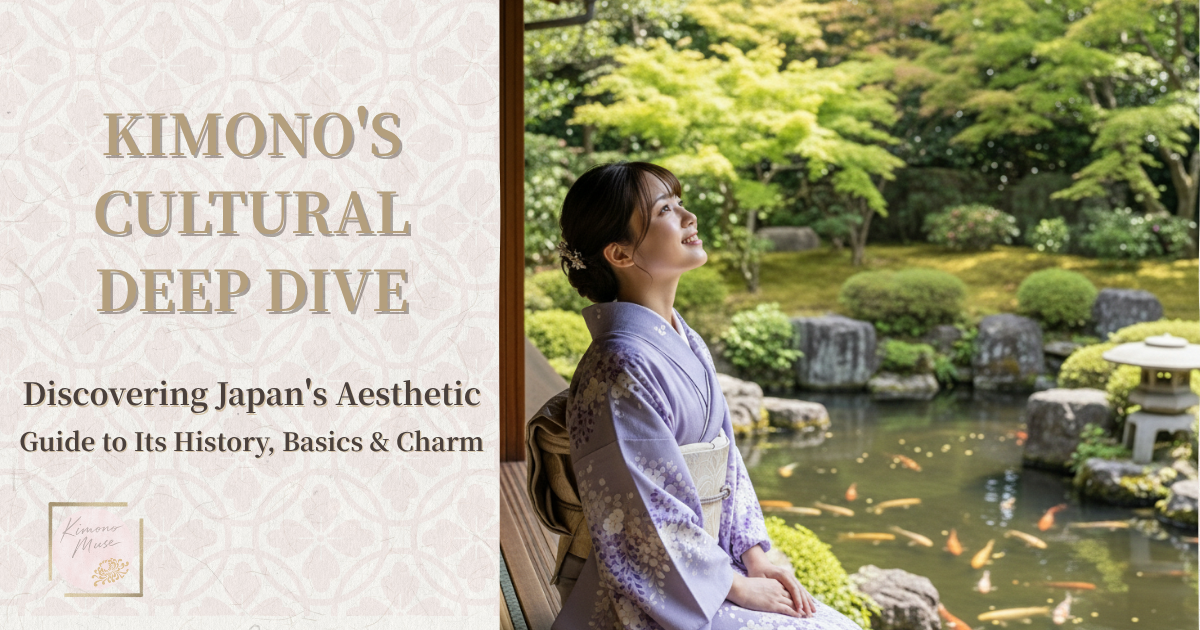Kimono is deeply familiar to the Japanese people.
Behind its beauty lies a quiet expression of Japan’s unique culture and spirit.
The method of tailoring—cutting straight lines and sewing them together—is a distinctive approach, completely different from Western clothing.
Whoever wears it, the kimono brings out a dignified presence, and for generations it has been cherished across age and gender.
In this article, we will gently explain, in a way that’s easy for beginners to understand, the simple question: What is a kimono?
What Is a Kimono? – Japan’s Traditional Attire
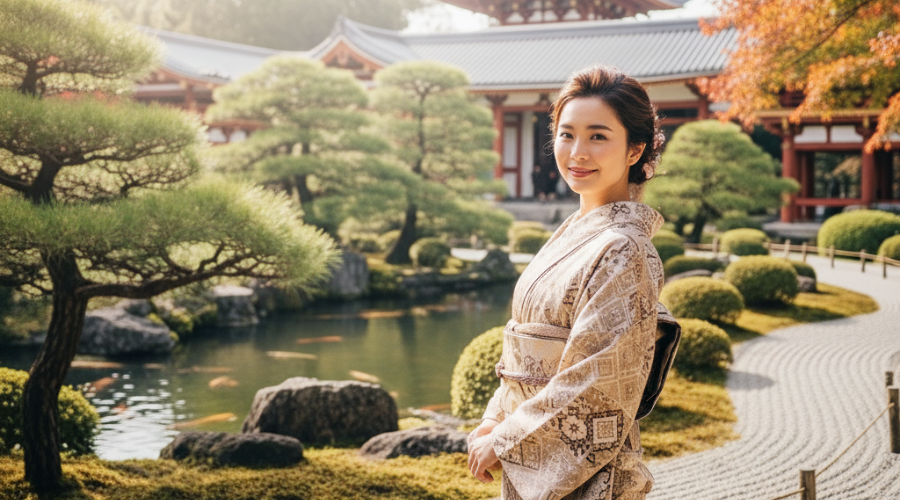
Kimono is a traditional Japanese garment with a long history, whose form and role have gradually evolved with the passing of time.
It is more than just clothing—it remains a vivid symbol of culture, reflecting the Japanese sense of beauty and way of life.
The distinctive tailoring, in which fabric is cut and sewn in straight lines, allows anyone to wear it beautifully regardless of body shape. For generations, it has been cherished across age and gender.
The colors and patterns embody a deep appreciation of the changing seasons, while also serving as a means of expressing the wearer’s individuality and mood.
There are many types of kimono. For example, the furisode, worn for Coming of Age ceremonies, is the most formal attire for young unmarried women and is designed to create a festive, elegant presence.
The homongi (visiting kimono) and komon (casual patterned kimono) are chosen according to occasion and social setting.
Even the way the obi (sash) is tied has layers of meaning, playing a key role in enhancing the harmony and beauty of the entire ensemble.
A Journey Through the History of Kimono
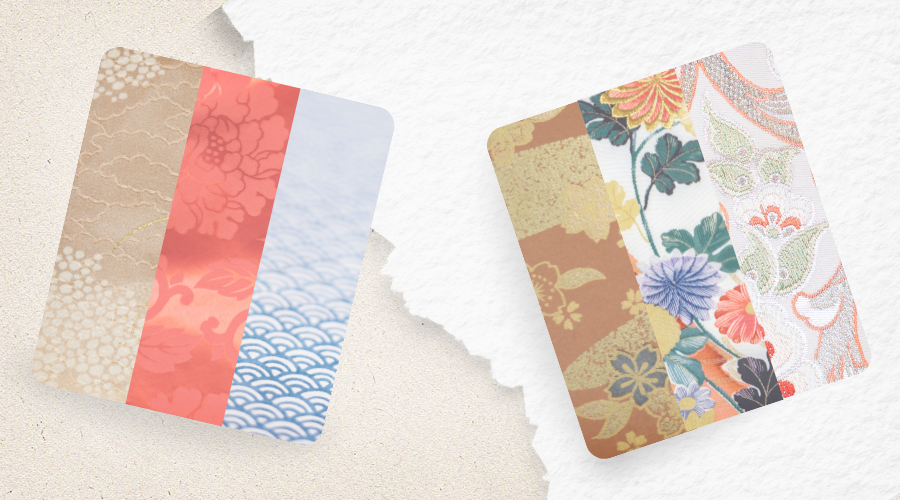
The history of the kimono has unfolded alongside Japanese life for more than a thousand years.
During the Nara and Heian periods, it was refined as court attire, with aesthetic sensibilities expressed through color combinations and layered garments.
By the Edo period, the flourishing of urban culture brought a dramatic advancement in textile techniques such as dyeing and weaving. Kimono patterns became increasingly diverse, and the garment spread among townspeople as everyday wear.
From the Meiji era onward, Western clothing became widespread, and kimono gradually declined as daily attire. Still, it has remained important for formal occasions and ceremonial settings.
In recent years, kimono has drawn fresh attention as both a form of fashion and a medium of cultural expression.
Throughout its transformations, kimono has continued to reflect the Japanese sense of beauty and cultural spirit across the ages.
Kimono: Brought to Life by the Wearer
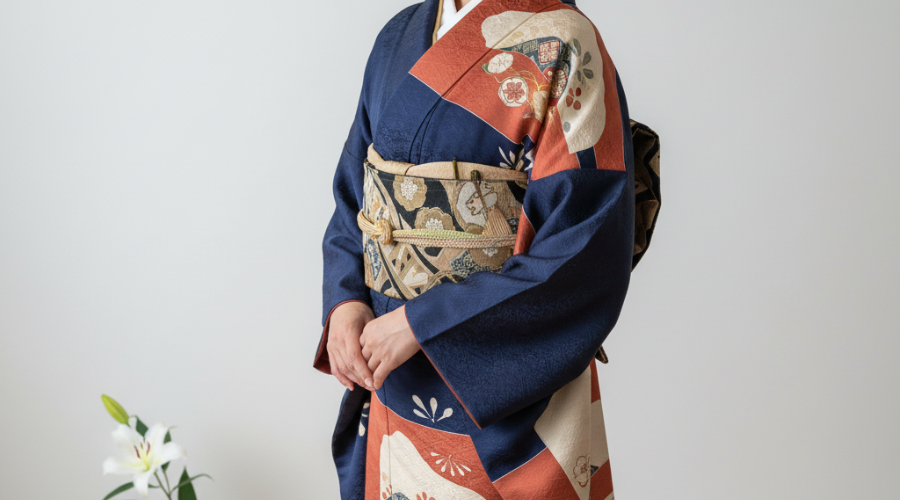
Kimono is far more than a piece of cloth.
It becomes complete only when paired with an obi sash and accessories, shaped by the wearer’s own sense of style—an art of dressing.
Even the same kimono can leave a very different impression depending on how the obi is tied or which accessories are chosen.
At times it can convey dignified elegance, while at others it may express softness and festive charm.
In these differences, the wearer’s aesthetic sensibilities and way of life are naturally reflected.
From everyday attire to the celebratory garments worn at life’s milestones, kimono serves as a mirror of a person’s spirit and story.
Patterns (monyō) and motifs, often symbolizing the seasons or auspicious meanings, together with colors rich in cultural significance, carry with them the heritage of centuries of tradition.
Through the layering of these elements, the kimono becomes more than clothing—it is a refined form of expression, perfectly attuned to time, place, and occasion.
Colors and Motifs Shaped by the Land and Seasons
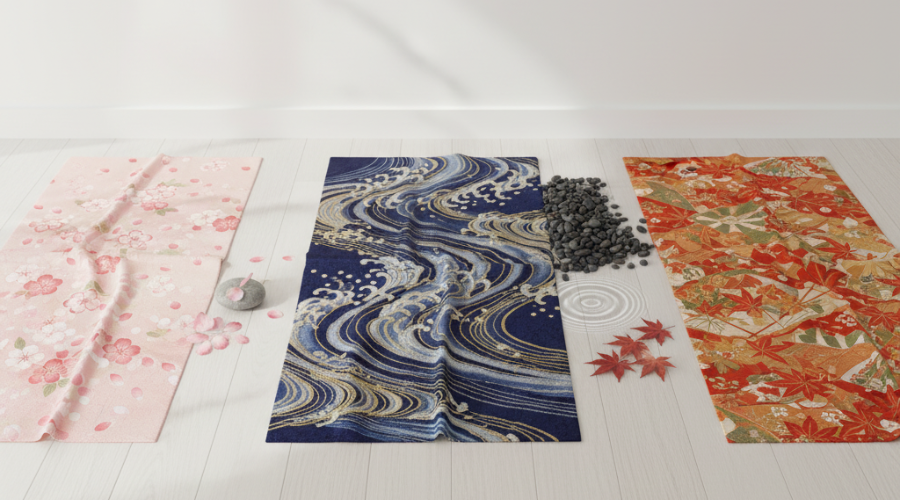
The colors and patterns of kimono embody the beauty of Japan’s seasons and natural surroundings.
Designs such as cherry blossoms in spring or autumn leaves in fall express the passing of the seasons, reflecting a culture that values harmony with nature.
Equally important are Japan’s unique dyeing and weaving techniques, which support and enrich this beauty.
The delicate coloring of yūzen dyeing, or the textures of kasuri and tsumugi weaves, developed in close connection with the character of each region’s land and climate.
Layering garments and coordinating colors also allow the kimono to adapt to changes in temperature, showing its practical design suited to Japan’s climate.
Blending both beauty and functionality, the kimono stands as a form of clothing culture deeply nurtured by the natural environment.
Enjoying Kimono in Today’s World
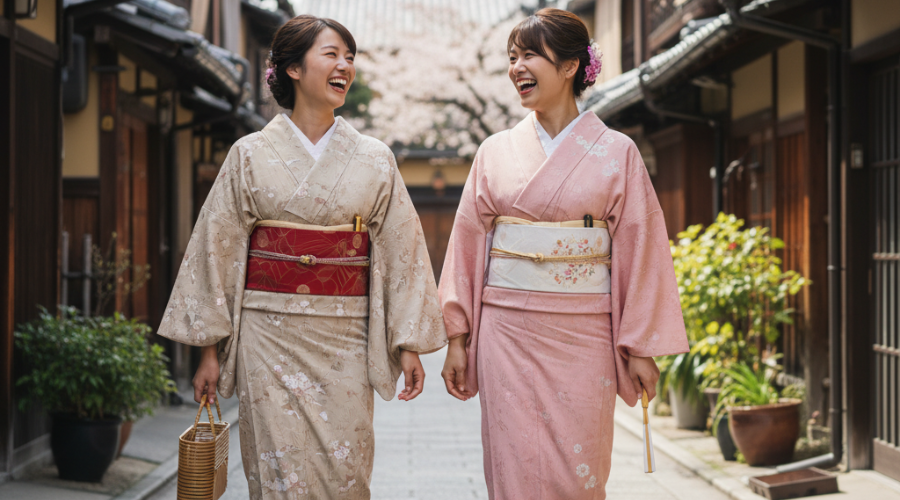
In recent years, new ways of enjoying kimono have continued to grow — through recycled kimono, rental services, and even casual styles that mix kimono with Western clothing.
More and more people are embracing it not only for special occasions, but also as part of their everyday fashion.
Carrying forward tradition while adapting to modern life, kimono will no doubt continue to evolve and reveal new charms for the future.
Summary
Kimono is a special garment, nurtured by Japan’s climate and culture and passed down through a long history.
Its unique straight-line tailoring suits any body shape and has been inherited across generations.
Patterns and colors reflect a deep appreciation of nature’s beauty, while the choice of obi and accessories creates limitless expressions.
More than clothing alone, kimono remains a cultural symbol that reflects daily life and spirit, and it will continue to accompany the lives of Japanese people into the future.
To learn about kimono is to learn about Japanese culture itself. And perhaps, it may add a touch of beauty and color to your own life as well.
✿Column: Fumi’s Kimono Diary ✿
In July, it’s common to see people in yukata on the streets. Not only at fireworks festivals or summer fairs, but also simply for an evening stroll, more and more people enjoy wearing this seasonal garment.
Just the other day, I went out for a walk with a friend in the early evening, and simply by wearing a yukata, the scenery around us felt more atmospheric and full of charm.
Summer in Japan can be harshly hot, but yukata made of linen or cotton are breathable and designed to bring coolness.
Encountering this balance of practicality and beauty reminds me once again that kimono is a culture nurtured within everyday life.
